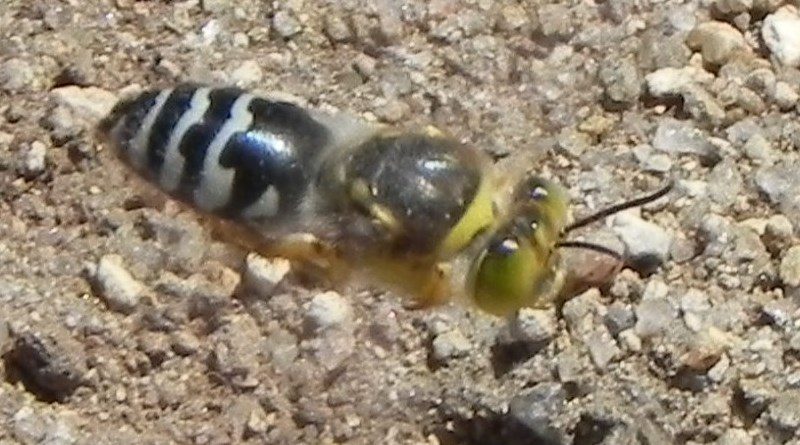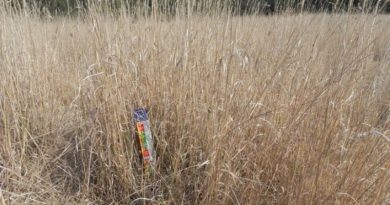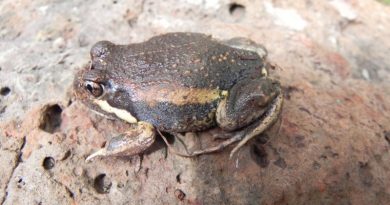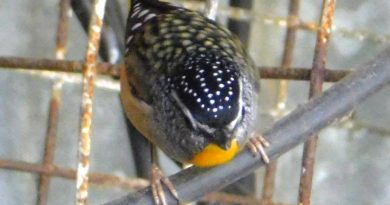Moffitts Farm seasonal update March 2016
Surface water gone for first time
In early March 2016 the two years of lower than average rainfall set a milestone for Moffitts Farm, all surface water had evaporated. This is the first time in our family’s history on Moffitts Farm which goes back to 1952, that all dams and creek springs have dried up. The creek not flowing over summer is not unusual but springs along it have up till now always contained some water.
Also a first for the creek in 2015 was no flow during winter-spring. Every other dryer than average year we have been here has seen the creek flowing for a few months, usually starting in June-July and ending in October. That means the creek has not run water since October 2014. The fact the springs have dried up highlights the severe soil moisture deficit as a result of 40% – 50% below average rainfall in 2014 and 2015.
Apart from numerous bird species using livestock troughs as their source of water during this dry time, it was very interesting to find honey bees with a hive in a nearby tree hollow using a garden bowl for water. This is the first time we have seen so many bees doing this.
Figure 1: With all surface water gone from the farm during February and March, honey bees use a garden bowl to satisfy their thirst. Photo: Patrick Francis.
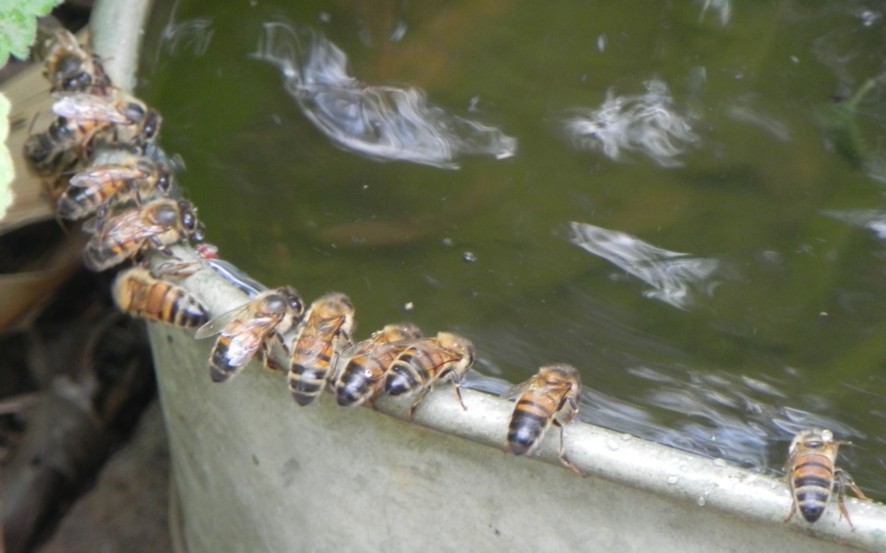
Summer rain gone missing
A feature of the current dry years for Moffitts Farm is that summer storms have not been as heavy as in most other years. This is not the case in other parts of Central and eastern Victoria as in January this year some districts even close to Romsey received high totals of 70 to 110mm in thunderstorms. Moffitts Farm received 32mm in January in storms which was useful to stimulate summer active perennial grasses, but not a sufficient amount to restore soil moisture so these grasses would continue growing during February and March. The hot conditions in February saw the green leaves dehydrate and plants stop growing. Our long-term data shows average summer rainfall on Moffitts Farm has been increasing, average autumn and winter rainfall has been declining, and spring rainfall is being maintained. BOM data shows the same trends for south eastern Australia.
Sheep condition maintained with silage
Despite the lower rainfall received over the two years, our summer active perennial pastures have continued to grow well and produce far more feed than our flock can utilise by the end of spring. This bulk of standing pasture equivalent of 3000 – 4000kg of dry matter in most paddocks has been the mainstay of sheep feed over the dry summer. While such feed can support maintenance of body weight in dry ewes (their lambs were weaned in mid December), it’s protein and energy content decline with time, unless there is summer rain to stimulate new tiller growth.
Given the dry conditions our strategy was to supply the weaned lambs who need higher protein and energy in their diets than is available in the standing dry pasture for growth with silage purchased from neighbours. Silage is fermenting pasture wrapped up with air-tight plastic into rolls. The fermentation process starts as soon as the air is excluded when the pasture is cut and rolled in late October. As it ferments the pasture becomes “sweeter” and very attractive for sheep to eat. It retains its high protein and energy content and if good quality is a perfect supplement to sheep grazing dry pasture.
The objective is not to replace the dry standing pasture with silage, but to provide a supplement of protein and energy. The weaned lambs have had access to silage since early January. The ewes on the other hand grazed pasture alone until mid February, but as its protein and energy content declined, silage was made available to them from then to mid March. This period was also the lead up to joining the ewes to rams on 14 March.
Figure 2A: As pasture energy and protein levels dropped during February the ewes and lambs were provided with pasture silage. This photo shows the key ingredients for content sheep in summer – clean drinking water, shade and abundant feed in form of standing pasture and silage to supplement protein and energy intake. Photo: Patrick Francis.
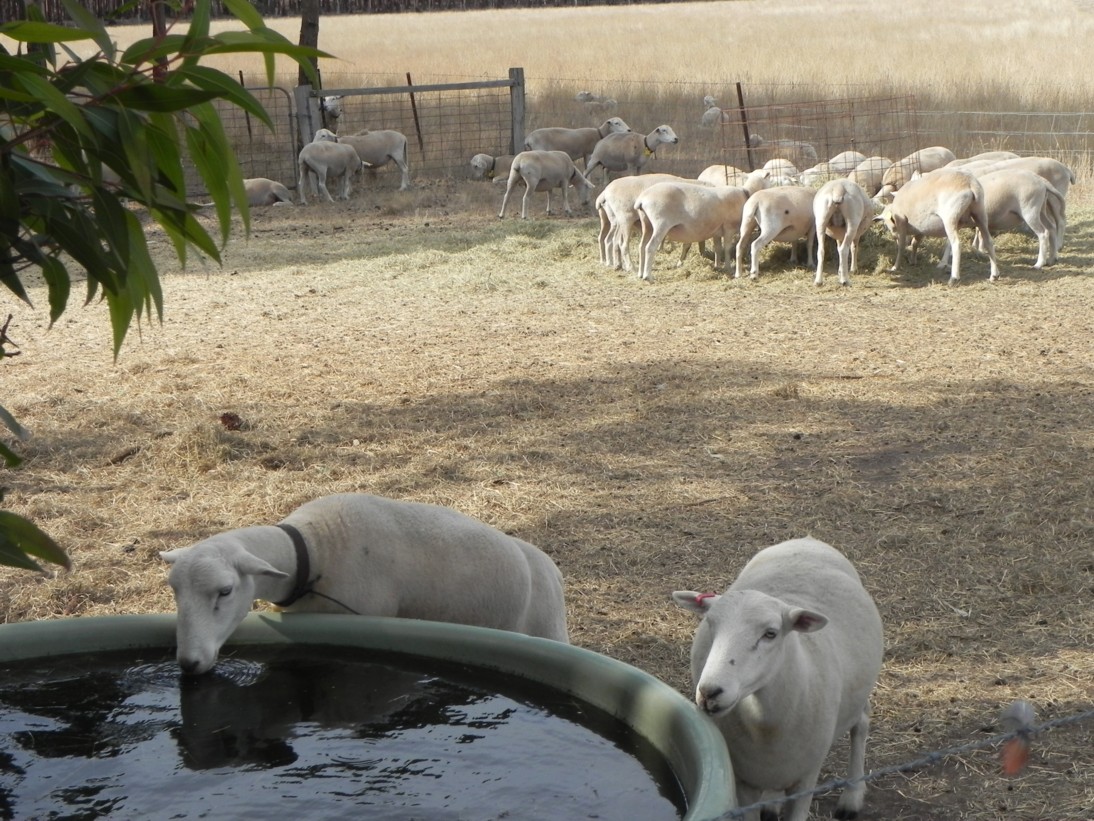
Figure 2B: Wiltipoll lambs enjoying pasture silage on Moffitts Farm in February. Note the old plough in the background, it is placed in this watering point yard for animals to rub on. Wiltipolls shed their wool and at times like to rub against a solid object to help remove wool. Photo: Patrick Francis.
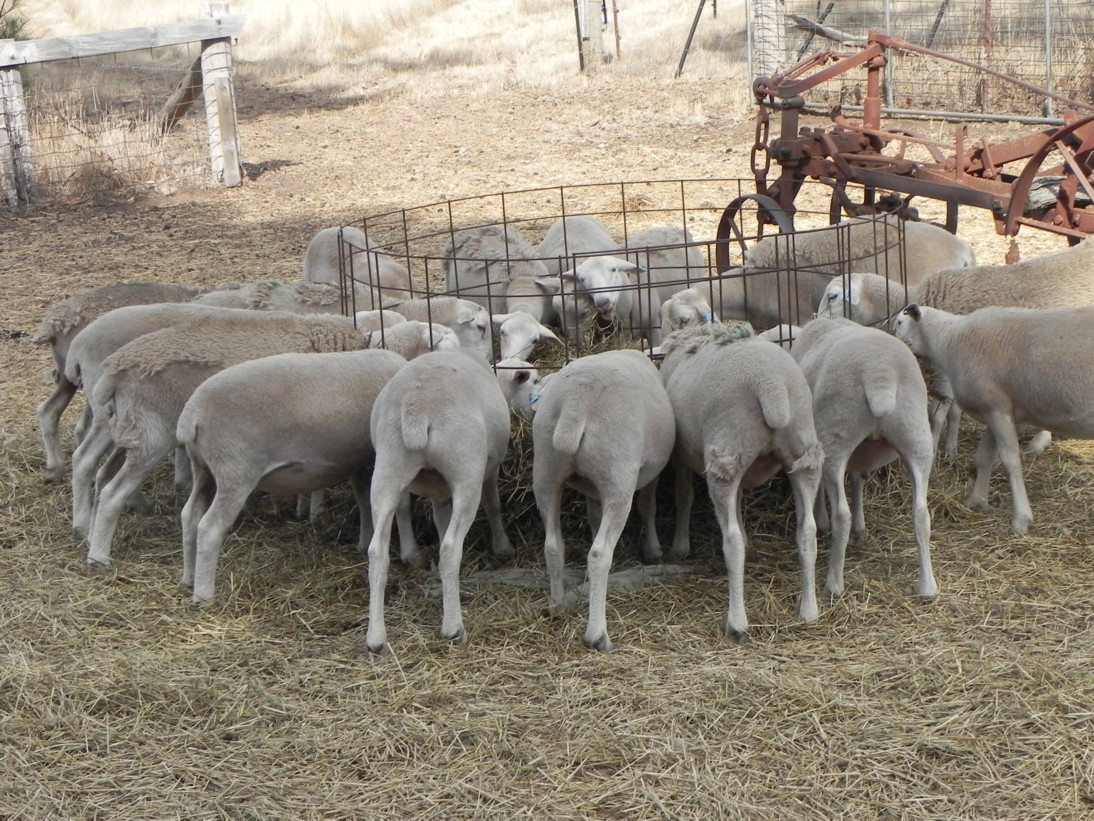
Forage brassica trial
Another strategy we trialed this year to support lamb growth over summer was planting a brassica forage crop into a standing pasture. Brassica is a cabbage family plant and grows 12 months of the year. In summer in provides another source of protein and energy for growing lambs if the summer active perennial grasses are not growing. Lambs quickly adapted to eating the forage brassica and grew exceptionally well on it and pasture. It is important that sheep have access to both pasture grasses and brassica in the same paddock so they have a balanced diet.
The trial demonstrated the value of forage brassica for lamb growth so we have embarked on a larger program of planting it. We will also plant some herbs, chicory and plantain as forages to supplement lamb growth during summer. Herbs are an interesting feed for ruminants such as sheep because they have medicinal attributes, in particular New Zealand research show they suppress internal worm larvae development in the gut. While internal worms are not a major issue for sheep on Moffitts Farm, herbs add another level of diversity to the sheep’s diet which helps support animal growth, health and contentment.
Composted manure spread
To help improve soil health and pasture growth we applied 20 tonnes of composted cattle manure at 2 tonnes per hectare and 10 tonnes of lime at 1 tonne per hectare to a number of paddocks on 4 March. This is an ongoing program or organic nutrient addition to ensure what we consider is the optimum level of nutrients, trace elements and soil ameliorants are available to the plants and the soil food web. The advantage composted manure has over traditional fertilisers is that in one application it provides a complete suite of major nutrients and trace elements essential for plant growth. It is also high in carbon and provides the soil food web with an additional source of organic matter.
Our nutrient application process is based on nutrient balance, that is balancing nutrient exports through livestock sales with nutrient inputs (composted manure). Because annual nutrient exports through sheep sales are low on a per hectare basis, manure application to each paddock is only needed on a 6 to 8 year frequency. Our “comfortable farming” management means we have no soil nutrient losses through soil erosion and it is unlikely to happen through leaching in our soil types.
Lime is a soil ameliorant and is used to ensure soil does not become too acid. Our basalt soils are naturally acidic and can slowly become more acid. Our soil tests suggest a lime application of one tonne per hectare in each paddock every 5 to 8 years will maintain pH above the optimum level of 5.5 in calcium chloride.
Figure 3: Composted cattle manure was spread on some paddocks at two tonnes per hectare as part of Moffitts Farm soil nutrient balance program. Lime was also spread at one tonne per hectare on the same paddocks. Photo: Patrick Francis.
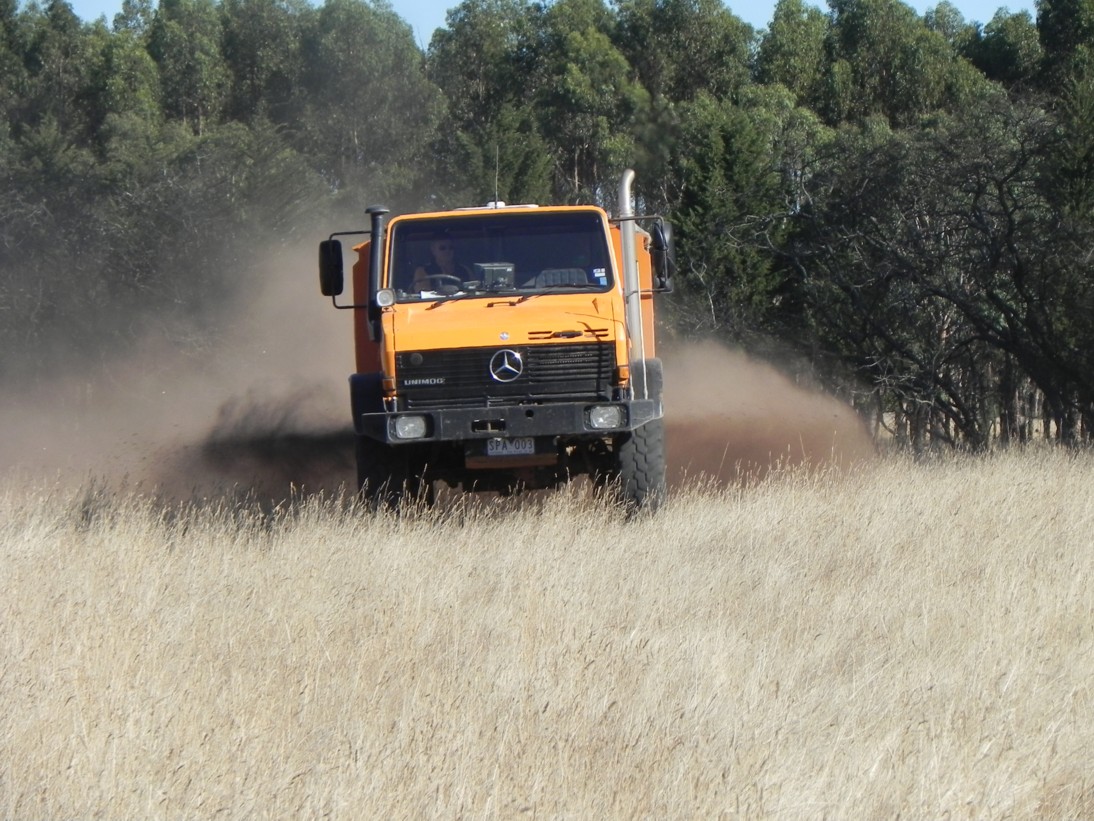
Timing of application in early March is deliberate as we can anticipate autumn rain is likely as some point in March to wash the manure and lime into the soil profile.
As I write, Moffitts Farm has had two useful falls, 13mm on March 13 and 22mm on March 18. Pastures are responding quickly. It will be interesting to see how the brassica and chicory which were sown on 14 March germinate and grow.
Wedge tail eagles
A new visitor to the farm over summer has been two wedge tail eagles. These have been rare in the past but for some unknown reason this pair is becoming more common. They seem particularly interested in one tall, old pine tree which now has few limbs but enough it seems close to the top which may make a nesting site. We noticed a great deal of calling and landing in this tree on two days in March. Unfortunately the local light aircraft airfield is only one kilometer away and the planes take off and landing flight paths are in the eagle’s flight area. I fear the planes will keep the eagles away.
Another common visitor around Moffitts Farm has been echidnas. They seem more frequent this summer than other years turning up in the forests, pastures and garden.
One of the interesting sightings in February was the blue bee. This is a solitary bee that excavates a home in soil. They are hard to see but when excavating become much more obvious.
Figure 4: The blue bee is hard to spot unless it is burrowing. Here the blue bee hovers above its burrow. Photo: Patrick Francis.
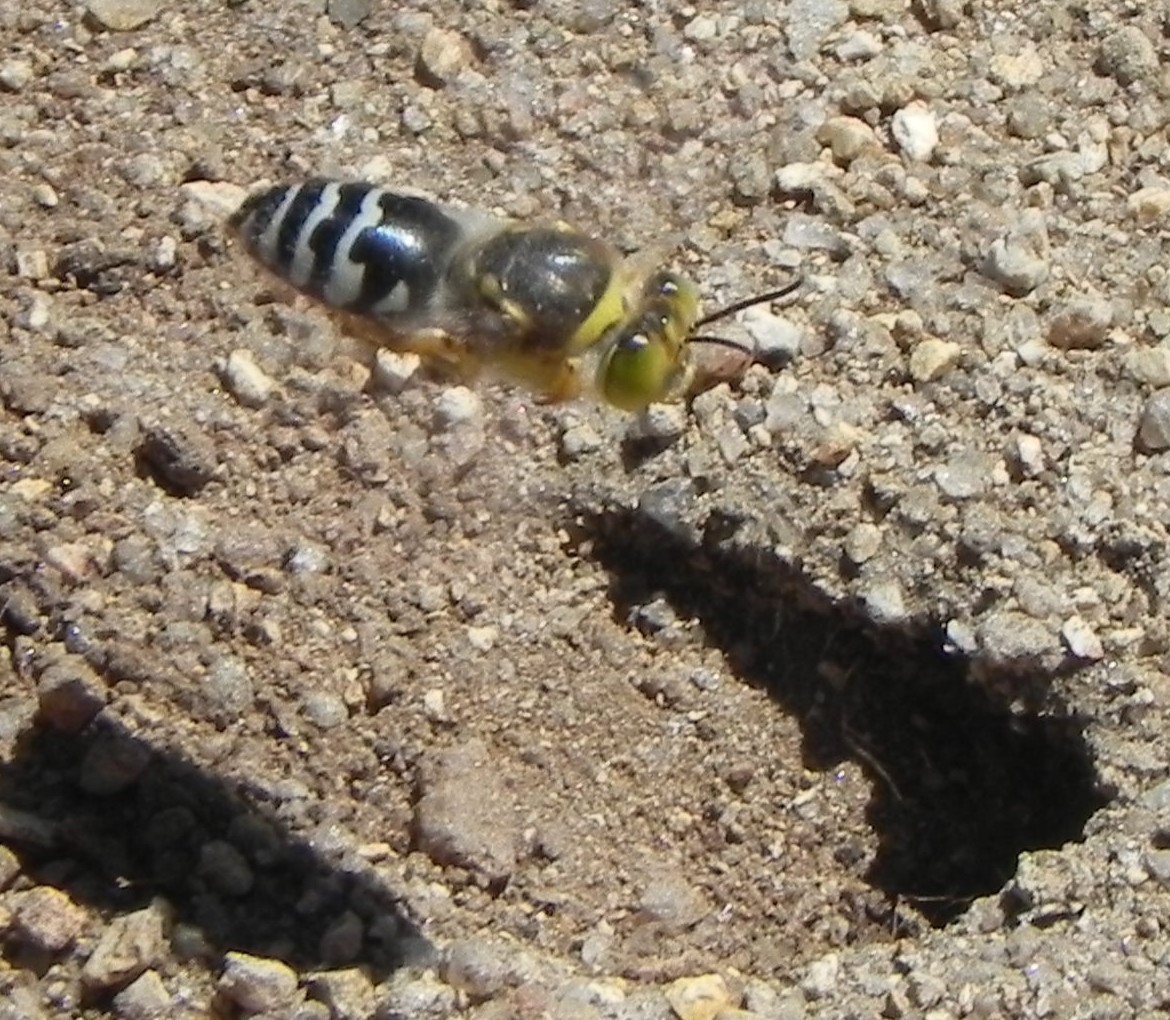
Frogs
What surprises us most on the native animal front in such a dry summer is the frequent sightings of frogs at night. The frogs seem to be everywhere and there is no water around. They were even found in holes dug for fence posts which had been left for a few days. We removed the frogs before putting the posts in. Some holes had two frogs waiting to be rescued. My theory about the number of frogs present on Moffitts Farm is that they benefit from the bulky pasture herbage mass across the farm. This gives them protection from heat and predators and enables them safe passage over a wide area.

